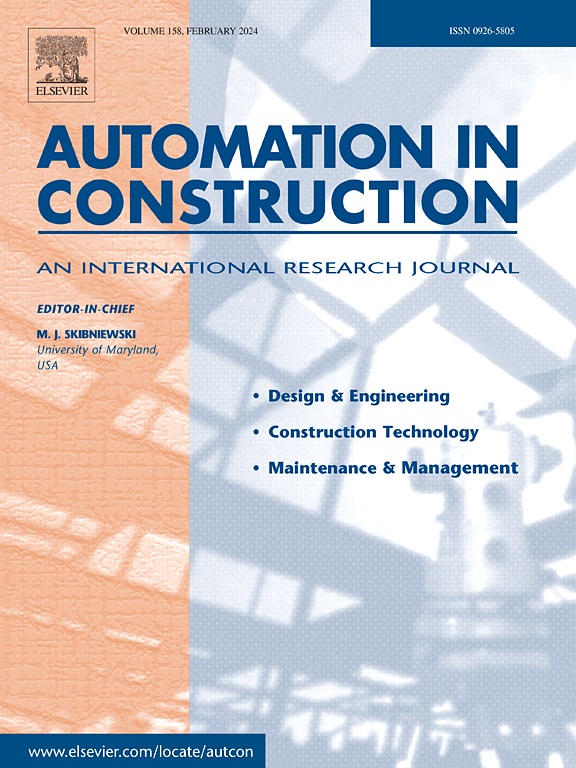基于遗传算法和多智能体协同深度q -网络的高层住宅平面图中住宅单元和交通核心的自动聚合
IF 9.6
1区 工程技术
Q1 CONSTRUCTION & BUILDING TECHNOLOGY
引用次数: 0
摘要
随着高层住宅需求的不断增长,传统的手工设计过程涉及多次修改和专业知识,面临设计效率的挑战。尽管已经提出了几种使用预定义组件库自动生成HRB标准楼层的方法,但跨不同设计场景的自适应解决方案仍然有限。提出了一种基于遗传算法和多智能体协同深度q -网络(MACDQN)的住宅单元和交通核心自动聚合构建完整标准平面图的方法。首先,使用信息蒙版和向量表示住宅单元和交通核心。然后,引入遗传算法对住宅单元的朝向进行优化。最后,提出MACDQN在满足各种设计目标的同时,自动聚合住宅单元和交通核心。一项全面的实证研究证实了所提出的方法在为各种目标从真实设计中产生实用和创新布局方面的效率,突出了其推进HRB平面图设计自动化的潜力。本文章由计算机程序翻译,如有差异,请以英文原文为准。
Automated aggregation of dwelling units and traffic cores in high-rise residential floor plans using genetic algorithm and multi-agent cooperative deep Q-network
With the increasing demand for high-rise residential buildings (HRBs), traditional manual design processes involving multiple revisions and expertise encounter design efficiency challenge. Although several approaches have been proposed to automatically generate HRB standard floors using predefined component libraries, adaptive solutions across diverse design scenarios remain limited. This paper presented an automated aggregation method for dwelling units and traffic cores to construct complete standard floor plans using a genetic algorithm (GA) and multi-agent cooperative deep Q-network (MACDQN). First, dwelling units and traffic cores are represented using information masks and vectors. Then, GA is introduced to optimize the orientation of dwelling units. Finally, MACDQN is proposed to automatically aggregate dwelling units and traffic cores while meeting various design objectives. A comprehensive empirical study confirms the efficiency of the proposed method in producing practical and innovative layouts from authentic designs for various objectives, highlighting its potential to advance HRB floor plan design automation.
求助全文
通过发布文献求助,成功后即可免费获取论文全文。
去求助
来源期刊

Automation in Construction
工程技术-工程:土木
CiteScore
19.20
自引率
16.50%
发文量
563
审稿时长
8.5 months
期刊介绍:
Automation in Construction is an international journal that focuses on publishing original research papers related to the use of Information Technologies in various aspects of the construction industry. The journal covers topics such as design, engineering, construction technologies, and the maintenance and management of constructed facilities.
The scope of Automation in Construction is extensive and covers all stages of the construction life cycle. This includes initial planning and design, construction of the facility, operation and maintenance, as well as the eventual dismantling and recycling of buildings and engineering structures.
 求助内容:
求助内容: 应助结果提醒方式:
应助结果提醒方式:


